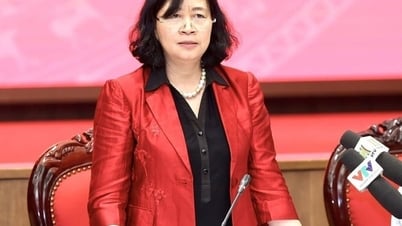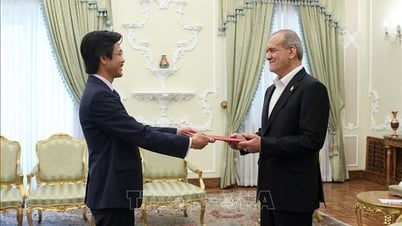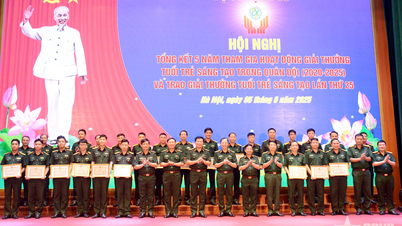China and Brazil’s recent agreement to use their respective currencies for transactions instead of the US dollar has contributed to affirming the “de-dollarization” trend that is increasingly taking shape in the world . According to Asia Times, this agreement was quickly followed by similar terms with 25 countries and regions around the world.
It can be said that, at present, Russia and China are the two leading countries in the effort to “de-dollarize”. In the context of increasingly fierce strategic competition for influence in the world among the world’s superpowers, it is not surprising that Moscow and Beijing are raising the pioneering flag. Having suffered the consequences of Washington’s “weaponization” of the USD, Russia and China are “joining hands” to “kick” the USD out of trade transactions as well as financial activities not only between the two countries but also globally.
Currently, the BRICS group of leading emerging economies , of which Russia and China are members, is promoting the creation of a reserve currency of the five member countries, which could be based on gold and other commodities, but not the US dollar. This project, called R5, would allow countries to gradually conduct bilateral trade without using the US dollar and also reduce the share of international US dollar reserves. In addition to China and Russia, India, Argentina, Brazil, South Africa and many regions such as the Middle East and Southeast Asia have also been promoting agreements in recent months to reduce dependence on the US dollar.
According to experts on sanctions and embargoes, at the heart of the “de-dollarization” initiative is the concern that the US could one day use its monetary power to target countries in the same way it did to sanction Russia. This is also an objective response to the unpredictability of US economic and financial policies as well as Washington’s abuse of the US dollar as the world’s leading reserve currency.
Last year, the world was stunned when half of the Russian Central Bank’s foreign exchange reserves ($300 billion) were frozen. This “blow” was just one of the financial sanctions led by the US against Russia over the conflict in Ukraine. This incident prompted some countries to take precautions against falling into a similar situation by avoiding dependence on the US dollar, contributing to the trend of using many different foreign currencies for payments around the world. The role of the US dollar in the world will also be somewhat reduced.
On Sputnik, Nikita Maslennikov, an expert from the Russian Center for Political Technologies, predicted the possibility of fundamental changes in the international payment and trade order in general and the world monetary system in the coming decades. According to Maslennikov, the more currencies that serve the world's trade turnover, the more monetary centers, the better. Maslennikov predicted that it would take about 10 to 15 years to build a multipolar, multi-currency monetary system.
Analysts also believe that even after the end of the era of US dollar hegemony, there is no need for a new “super currency”. Instead, developing countries will use their strengths in economic growth and trade cooperation to jointly build a multipolar international monetary system, which is expected to be fairer and more effective.
Clearly, the trend of “de-dollarization” has created conditions for other currencies to increase their role, especially the Chinese yuan (CNY). In Russia, Western sanctions have tightened both the supply and demand for USD in Russia, making the CNY increasingly popular. According to Bloomberg, in February, the trading volume of CNY on the Moscow exchange exceeded the USD for the first time, while before the conflict in Ukraine, the amount of CNY traded in the Russian market was negligible. Earlier this year, the Russian Finance Ministry said that the CNY is “increasingly important” for the country’s sovereign wealth fund.
However, despite the current trend of “de-dollarization” that has shaken the international position of the USD, analysts still believe that the US currency will not easily lose its dominant position. The solid position of the USD has been proven after global financial incidents such as the collapse of the Bretton Woods system in the 1970s, or the birth of the euro in 1999 and then the financial crisis of 2008-2009. 60% of foreign exchange reserves of central banks in the world are currently maintained in USD, which is a testament to this.
SPRING WIND
Source
































































































Comment (0)